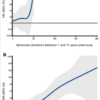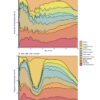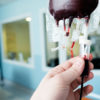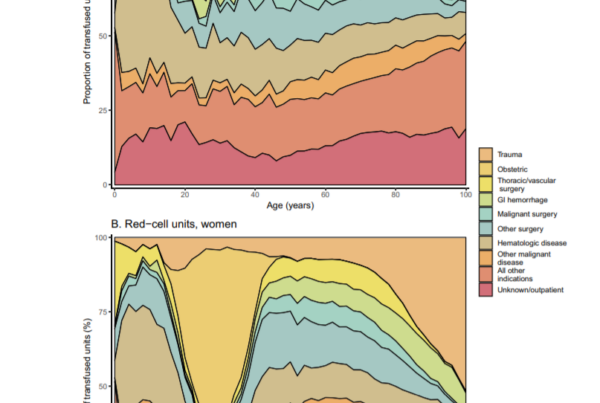Recently, plateletpheresis donations using a widely used leukoreduction system (LRS) chamber have been associated with T‐cell lymphopenia. However, clinical health consequences of plateletpheresis‐associated lymphopenia are still unknown.
A nationwide cohort study using the SCANDAT3‐S database was conducted with all platelet‐ and plasmapheresis donors in Sweden between 1996 and 2017. A Cox proportional hazards model, using donations as time‐dependent exposures, was used to assess the risk of infections associated with plateletpheresis donations using an LRS chamber.
A total of 74 408 apheresis donors were included. Among donors with the same donation frequency, plateletpheresis donors using an LRS chamber were at an increased risk of immunosuppression‐related infections and common bacterial infections in a dose‐dependent manner. While very frequent donors and infections were rare in absolute terms resulting in wide confidence intervals (CIs), the increased risk was significant starting at one‐third or less of the allowed donation frequency in a 10‐year exposure window, with hazard ratios reaching 10 or more. No plateletpheresis donors that used an LRS chamber experienced a Pneumocystis jirovecii, aspergillus, disseminated mycobacterial, or cryptococcal infection. In a subcohort (n = 42), donations with LRS were associated with low CD4+ T‐cell counts (Pearson’s R = −0.41; 95% CI, − 0.63 to −0.12).
Conclusion
Frequent plateletpheresis donation using an LRS chamber was associated with CD4+ T‐cell lymphopenia and an increased risk of infections. These findings suggest a need to monitor T‐lymphocyte counts in frequent platelet donors and to conduct future investigations of long‐term donor health and for regulators to consider steps to mitigate lymphodepletion in donors.1
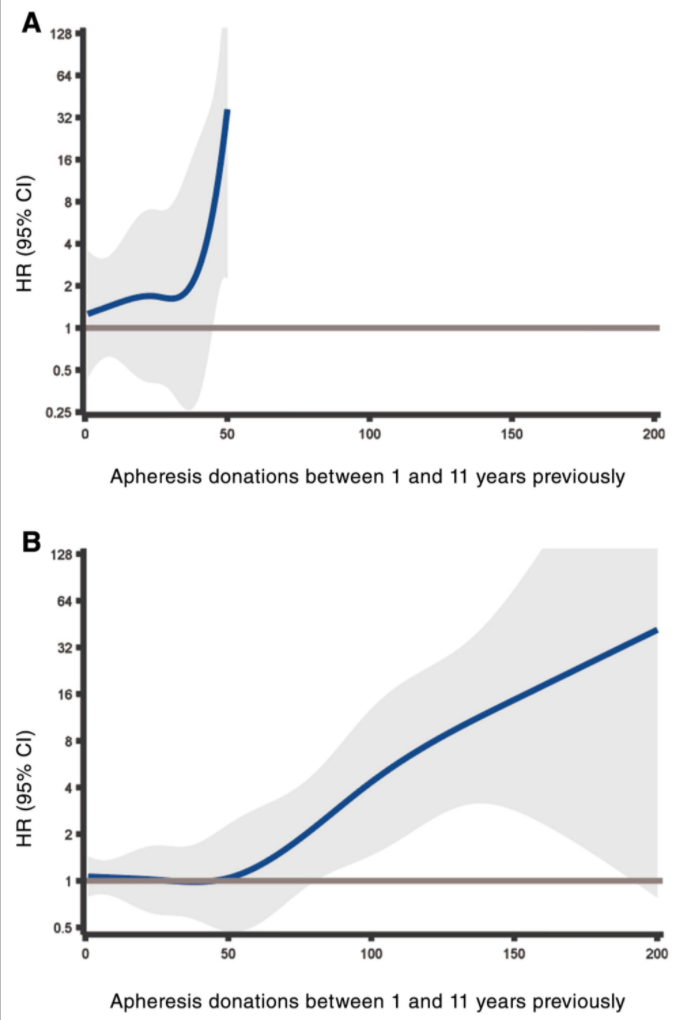
Dose-dependent increase in cause-specific hazard ratio for immunosuppression-related infections
Hazard ratio beyond 50 donations between 1-11 years previously was inestimable due to lack of events
Dose-dependent increase in cause-specific hazard ratio for common bacterial infections
Wide confidence intervals due to few donors with very many donations
Figure 2. Risk of infections comparing LRS donations to non‐LRS donations, in relation to number of past donations between 1 and 11 years previously modeled as a restricted cubic spline. A, Immunosuppression‐related infections. B, Common bacterial infections. The range of the y axes is restricted to 128 for legibility.
1.
Zhao J, Gabriel E, Norda R, et al. Frequent platelet donation is associated with lymphopenia and risk of infections: A nationwide cohort study. Transfusion. Published online November 13, 2020. [PubMed]
